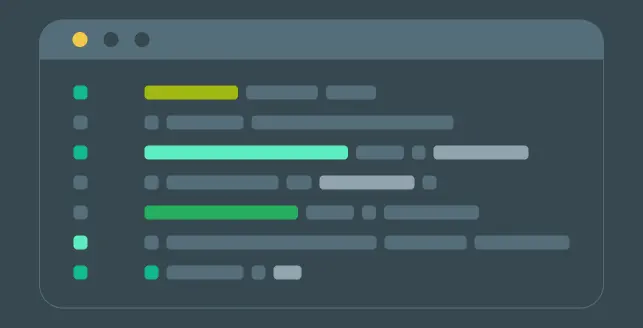
Apache Struts is an open-source project maintained by the Apache Software Foundation.
It mainly provides two versions of the framework products, Struts 1 and Struts 2. S2-008 involves multiple vulnerabilities mainly due to the lack of strict restrictions on the incoming parameters, resulting in multiple places where malicious code can be executed.
One such vulnerability exists in the Cookie Interceptor component in Apache Struts2 versions prior to 2.3.1.1. The vulnerability stems from the failure to use the parameter-name whitelist.
What are the impacts of Apache Struts2 S2-008 RCE?
The Apache Struts2 S2-008 Remote Code Execution (RCE) vulnerability is a critical security issue that allows attackers to execute arbitrary code on a target server. Here are some potential impacts of this vulnerability:
1. Arbitrary code execution
Attackers can exploit this vulnerability to execute arbitrary code on the server where Apache Struts2 is deployed.
This could lead to various malicious activities, such as installing backdoors, modifying or stealing sensitive data, or launching further attacks against other systems.
2. Full server compromise
Since the vulnerability allows remote code execution, attackers could potentially gain complete control over the affected server. This means they can manipulate files, install additional malware, modify configurations, or even escalate privileges.
3. Data breach
If the compromised server hosts sensitive data, such as personally identifiable information (PII), financial records, or proprietary information, attackers could exfiltrate this data, leading to a data breach.
This can result in significant financial losses, legal liabilities, and reputational damage for the organization.
4. Disruption of services
Attackers may leverage the vulnerability to disrupt the normal operation of the server, or the applications hosted on it. This could lead to service downtime, loss of revenue, and impact on user experience.
5. Propagation to other systems
Once a server is compromised, attackers may use it as a launching pad to attack other systems within the network. They could pivot from the compromised server to other systems, potentially causing widespread damage and compromising additional sensitive data.
6. Regulatory compliance violations
Organizations may be subject to regulatory requirements such as GDPR, HIPAA, or PCI DSS. Successful exploitation of the Apache Struts2 S2-008 vulnerability could lead to violations of these regulations, resulting in fines, legal actions, and damage to the organization’s reputation.
7. Reputation damage
Public disclosure of a vulnerability and its exploitation can damage the reputation of the affected organization. Customers, partners, and stakeholders may lose trust in the organization’s ability to secure its systems and protect their data
Given the severity of the Apache Struts2 S2-008 vulnerability, it is critical for organizations to promptly apply security patches provided by the Apache Struts project, implement mitigations if patches are not immediately available, and conduct thorough security assessments to identify and remediate any potential vulnerabilities in their systems.
How can you prevent Apache Struts S2-008 Remote Code Execution vulnerability?
To prevent Apache Struts2 S2-008 Remote Code Execution (RCE) vulnerability, consider the following measures:
1. Patch or upgrade Apache Struts
The most effective way to mitigate the vulnerability is to apply patches provided by the Apache Struts project.
Upgrade to a patched version of Apache Struts that addresses the S2-008 vulnerability. Ensure that your systems are running the latest, patched version to protect against known vulnerabilities.
2. Implement Web Application Firewalls (WAF)
Deploy a WAF to monitor and filter incoming HTTP traffic. Configure the WAF to block or alert on requests attempting to exploit the S2-008 vulnerability. WAFs can provide an additional layer of defense against known and unknown attacks targeting web applications.
3. Disable Dynamic Method Invocation (DMI)
Disable Dynamic Method Invocation in Apache Struts configuration files. This can help mitigate the risk of RCE vulnerabilities by preventing the execution of arbitrary methods via OGNL (Object-Graph Navigation Language) expressions.
4. Input validation and sanitization
Implement rigorous input validation and sanitization mechanisms in your web applications. Validate and sanitize all user-supplied input to prevent injection attacks, including remote code execution vulnerabilities like S2-008. Use whitelisting approaches to only allow expected input patterns.
5. Least privilege principle
Apply the principle of least privilege to restrict the permissions and capabilities of the Apache Struts process and associated services. Limit the access rights and privileges granted to the Apache Struts process to minimize the potential impact of successful exploitation.
6. Secure configuration
Ensure that Apache Struts is configured securely according to best practices. Disable unnecessary features and components, configure secure default settings, and regularly review and update configuration files to address any security weaknesses.
7. Continuous monitoring and incident response
Implement robust monitoring and logging mechanisms to detect and respond to suspicious activities or attempted exploits targeting Apache Struts. Monitor system and application logs for signs of exploitation attempts, anomalous behavior, or unauthorized access.
Security Awareness and Training: Educate developers, system administrators, and other relevant personnel about the risks associated with the Apache Struts S2-008 vulnerability and the importance of applying security patches promptly. Provide training on secure coding practices, vulnerability management, and incident response procedures.
By implementing these preventive measures, organizations can significantly reduce the risk of exploitation of the Apache Struts2 S2-008 vulnerability and enhance the security posture of their web applications and systems.





